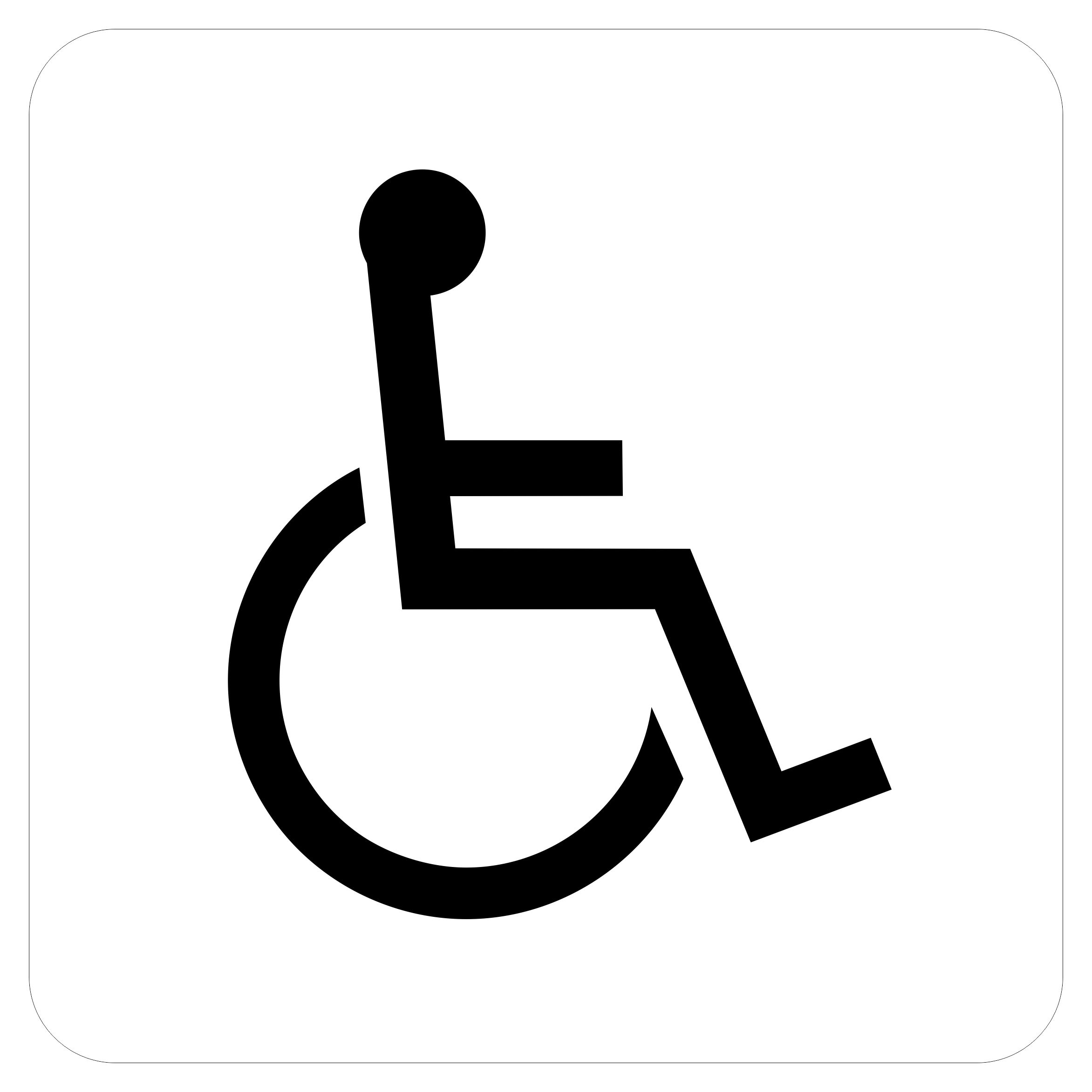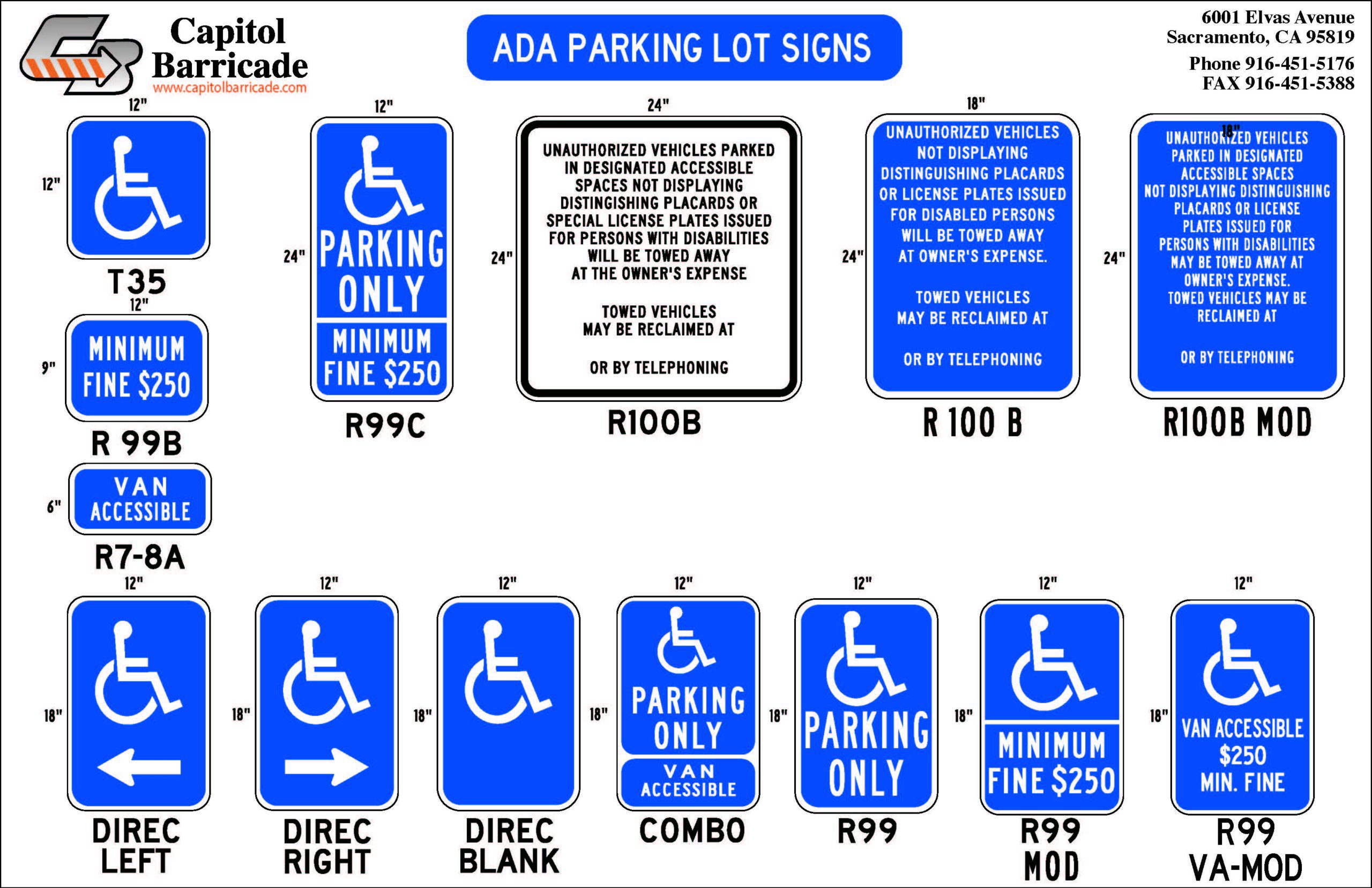ADA Signs: Important Tools for Inclusive Environments
ADA Signs: Important Tools for Inclusive Environments
Blog Article
Discovering the Secret Functions of ADA Indications for Improved Ease Of Access
In the realm of ease of access, ADA indications act as silent yet effective allies, making sure that areas are comprehensive and accessible for people with handicaps. By integrating Braille and responsive components, these indications break barriers for the aesthetically damaged, while high-contrast color pattern and understandable font styles satisfy diverse visual requirements. In addition, their strategic positioning is not arbitrary yet instead a calculated initiative to assist in seamless navigating. Past these features exists a deeper narrative regarding the evolution of inclusivity and the ongoing dedication to producing equitable spaces. What more could these indicators signify in our pursuit of global availability?
Importance of ADA Compliance
Making certain compliance with the Americans with Disabilities Act (ADA) is critical for fostering inclusivity and equal access in public areas and offices. The ADA, passed in 1990, mandates that all public facilities, employers, and transport solutions suit people with impairments, ensuring they appreciate the very same rights and possibilities as others. Compliance with ADA standards not only satisfies lawful obligations however additionally enhances an organization's credibility by showing its commitment to diversity and inclusivity.
One of the crucial elements of ADA compliance is the execution of obtainable signage. ADA signs are developed to guarantee that people with handicaps can easily navigate with buildings and rooms.
In addition, sticking to ADA guidelines can alleviate the risk of potential penalties and legal effects. Organizations that stop working to abide by ADA guidelines may face legal actions or charges, which can be both financially burdensome and destructive to their public photo. Thus, ADA conformity is integral to cultivating an equitable atmosphere for everyone.
Braille and Tactile Aspects
The incorporation of Braille and responsive elements into ADA signs embodies the concepts of ease of access and inclusivity. These features are critical for people who are aesthetically damaged or blind, enabling them to navigate public areas with better independence and self-confidence. Braille, a responsive writing system, is important in giving written info in a layout that can be easily perceived with touch. It is typically put underneath the equivalent text on signage to make certain that individuals can access the information without aesthetic aid.
Responsive aspects prolong beyond Braille and include raised icons and personalities. These parts are made to be discernible by touch, enabling people to recognize area numbers, bathrooms, leaves, and other crucial areas. The ADA sets details standards relating to the size, spacing, and placement of these responsive aspects to optimize readability and ensure uniformity throughout different settings.

High-Contrast Shade Plans
High-contrast color design play a critical duty in boosting the exposure and readability of ADA signs for individuals with aesthetic disabilities. These plans are essential as they take full advantage of the difference in light reflectance in between text and history, ensuring that indicators are easily noticeable, even from a range. The Americans with Disabilities Act (ADA) mandates the use of certain color contrasts to fit those with limited vision, making it a critical aspect of conformity.
The efficacy of high-contrast colors depends on their capability to stick out in numerous lighting conditions, consisting of dimly lit settings and areas with glare. Typically, dark text on a light history or light text on a dark background is utilized to attain optimal contrast. For circumstances, black message on a white or yellow history provides a stark aesthetic distinction that aids in fast acknowledgment and understanding.

Legible Fonts and Text Dimension
When considering the style of ADA signs, the selection of browse around this site understandable typefaces and appropriate text size can not be overstated. These elements are essential for making sure that indications are obtainable to people with aesthetic problems. The Americans with Disabilities Act (ADA) mandates that typefaces must be sans-serif and not italic, oblique, script, very attractive, or of uncommon kind. These requirements aid ensure that the text is quickly understandable from a range which the personalities are appreciable to diverse audiences.
According to ADA standards, the minimum message height must be 5/8 inch, and it read the article ought to increase proportionally with checking out distance. Uniformity in text dimension contributes to a natural visual experience, assisting individuals in browsing atmospheres successfully.
Moreover, spacing between letters and lines is integral to readability. Sufficient spacing prevents characters from showing up crowded, enhancing readability. By sticking to these standards, designers can significantly enhance accessibility, making sure that signs serves its designated objective for all individuals, no matter their aesthetic capabilities.
Reliable Placement Methods
Strategic placement of ADA signage is vital for making best use of accessibility and ensuring compliance with lawful criteria. ADA guidelines state that indications ought to be mounted at an elevation between 48 to 60 inches from the ground to guarantee they are within the line of sight for both standing and seated individuals.
Additionally, indicators should be positioned nearby to the lock side of doors to permit simple recognition before access. Consistency in indicator placement throughout a center improves predictability, lowering confusion and boosting general individual experience.

Conclusion
ADA indications play a vital duty in promoting availability by integrating attributes that address the requirements of people with specials needs. Incorporating Braille and tactile aspects makes certain vital details is obtainable to the visually impaired, while high-contrast color design and understandable sans-serif fonts enhance presence across various illumination problems. Efficient positioning approaches, such as proper placing elevations and strategic locations, even more assist in navigation. These aspects collectively promote a comprehensive setting, emphasizing the relevance of ADA conformity in making certain equivalent accessibility for all.
In the realm of ease of access, ADA signs serve as silent yet powerful allies, making certain that rooms are inclusive and accessible for individuals with impairments. The ADA, enacted in 1990, mandates that all public centers, companies, and transportation services accommodate individuals with handicaps, guaranteeing they delight in the same civil liberties and opportunities as others. ADA Signs. ADA indications are designed to make certain that individuals with disabilities can conveniently navigate via spaces and structures. ADA guidelines specify that indications ought to be mounted at an elevation between 48 to 60 inches from the ground to guarantee they are within the line of sight for both standing and seated individuals.ADA indications play a vital duty in promoting accessibility by incorporating features that attend to the requirements of people with specials needs
Report this page